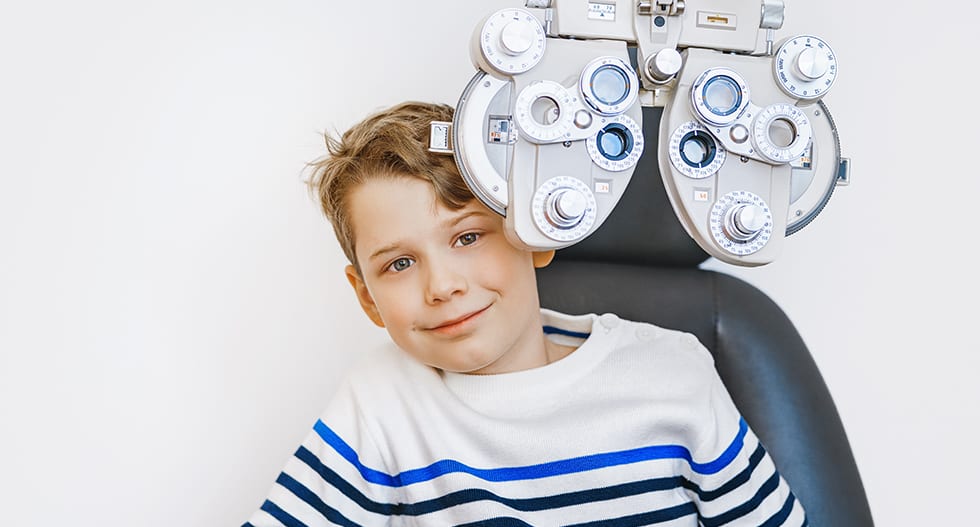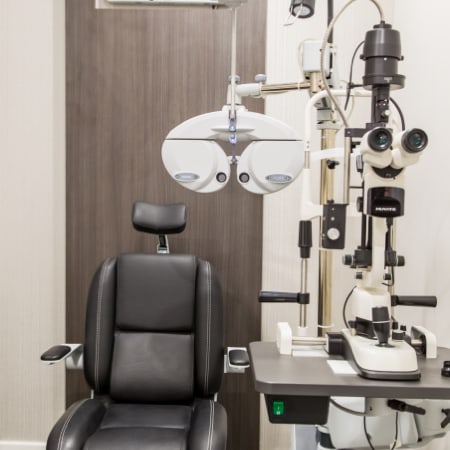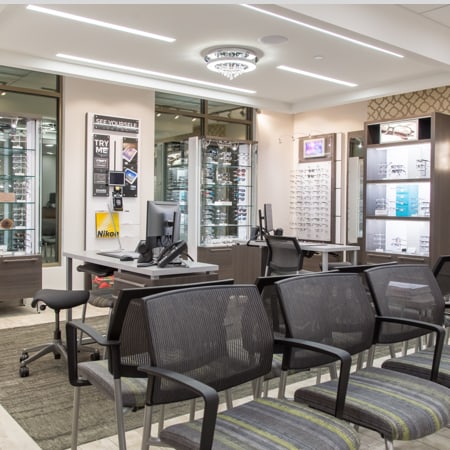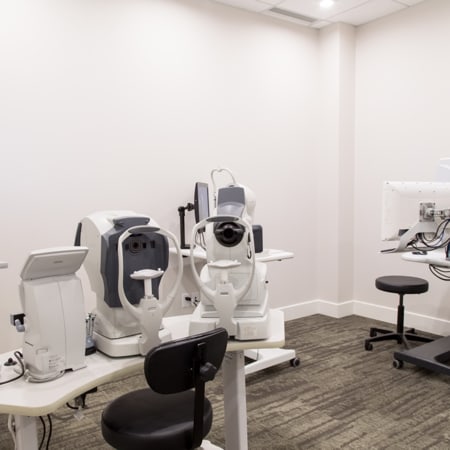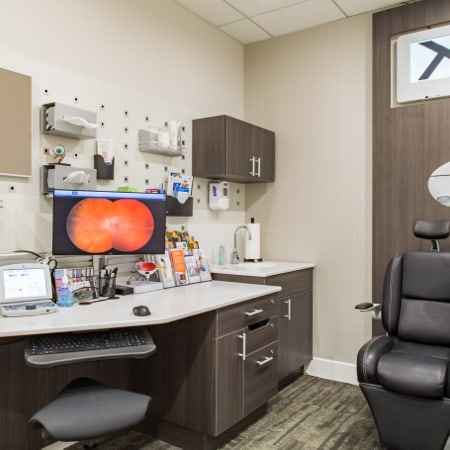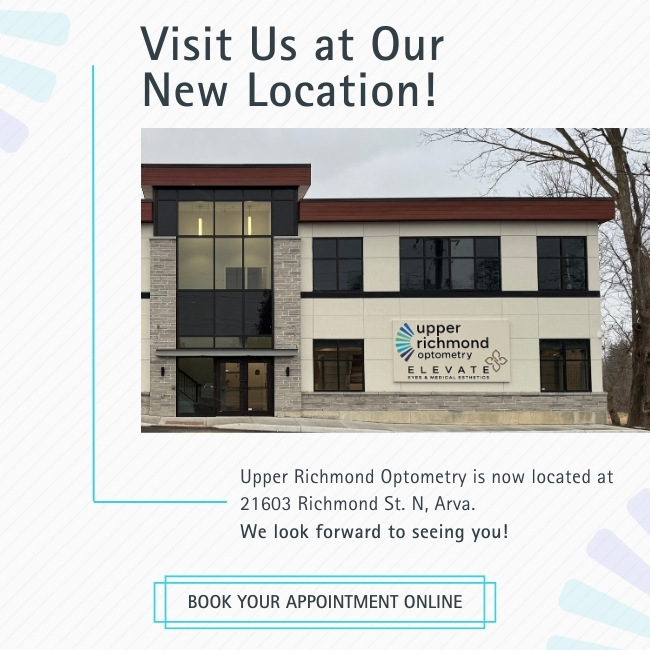As Your Child Develops, So Does Their Vision
There is so much growth and development that takes place in children in a short amount of time. This is also the case when it comes to children’s vision. In fact, about 80% of learning in children is visual. This means it’s extra important to stay on top of your child’s eye exam schedule to help them thrive academically and socially.
We provide eye exams in a way that makes sense for your child using pictures, patterns and specialized techniques to test their vision, even if they are not speaking yet.
Book today to get your child’s eyes tested.

How Often Is a Children’s Eye Exam Needed?
The frequency of an eye exam depends on the age of the child and risk level. An exam is recommended:
- At least once between 6-9 months.
- At least once between 2-5 years.
- Once a year between 6-19 years old.
Please note that this is a guideline to follow, but your doctor will recommend an eye exam frequency depending on your child’s vision risks.
It is important to note that OHIP covers the cost of a yearly eye exam for children 19 years or younger, so it may be recommended that preschool-aged children attend yearly.


Myopia Control For Children
Myopia is a common eye condition that can start presenting early in childhood. Myopia is also known as nearsightedness and affects the way a child sees objects in the distance, making them blurry.
Myopia control includes treatment options that can slow down the progression of myopia and help prevent eye conditions and diseases in adulthood. There is also research that suggests that children spending an hour or more outside a day can delay the onset of myopia.
Signs of Myopia to Look Out for in Children
When children are experiencing vision issues, they may not know how to express what they’re experiencing or even know there is an issue to begin with. There are signs that a child might show that can point to an undiagnosed condition, such as amblyopia, strabismus, or myopia.
Signs of myopia in children can include:
- Watery eyes
- Crusty eyelids
- Rubbing eyes frequently
- Frequent eye infections
- Frequent blinking
- Eyes that turn up, out, or in
- Squinting
- Poor posture when reading or writing
- Needing to move closer or farther to objects
- Tilting their head or closing one eye
The Eye See…Eye Learn Program
Upper Richmond Optometry is proud to participate in the Eye See…Eye Learn program. This provincially administered government program is designed to ensure that all junior kindergarten children in Ontario can get a comprehensive eye exam with a local, participating optometrist before they begin grade 1. The cost of the exam is covered by OHIP.
Children that need glasses are provided with a pair in their prescription free of charge. Contact our team today to learn more.
Taking Care of Your Child’s Vision
We take great care in treating children’s vision and are here for your child’s eye care needs. Book an eye exam if your child is due or they are showing concerning signs of vision problems.
More of Our Services
Explore the different eye care services we have to offer at Upper Richmond Optometry.
AMD Centre of Excellence
We are proud to be an AMD Centre of Excellence that uses modern technology, experience, and education towards treating and managing age-related macular degeneration. Our practice has earned the distinction of being an AMD Centre of Excellence through continued efforts of managing and understanding AMD.
Laser Eye Surgery Consultations
We’re here to support you every step of the way during your laser eye surgery journey. A consultation is the first step to exploring your options like LASIK, PRK, and Intralase. We provide co-management for your pre and post-operative care with your surgical team.
Eye Disease Diagnosis & Management
Eye disease can come in different forms, like cataracts, glaucoma, and age-related macular degeneration. Our office helps diagnose and manage the different forms of eye disease. Learn more about how we can help.
Google Reviews
Take a look at what our patients have to say
about their Upper Richmond Optometry experience.
Come Visit Us

We’re proud to serve North London and Arva. We’re currently located on Medway Road, right across from the Arva Fire Station and next to Medway High School.
Our Address
- 21603 Richmond St. N.
- Arva, ON N0M 1C0
Contact Information
- Phone: 519-660-8854
- Email: [email protected]
Our Hours

Clinic of Doctors Vision Group

